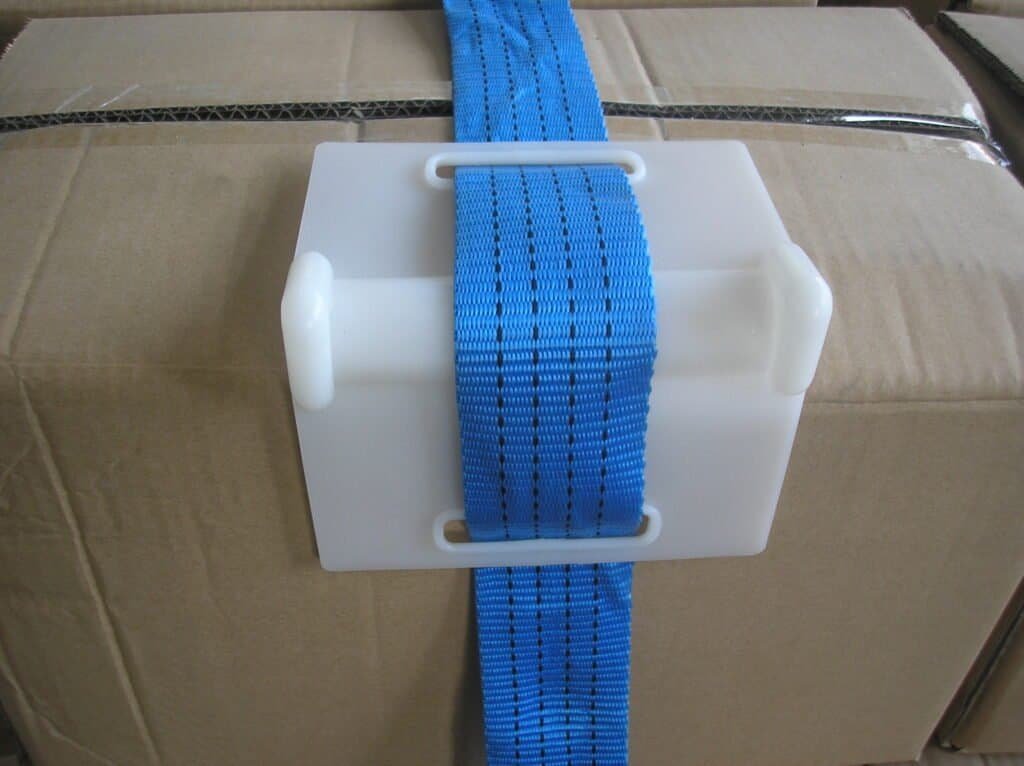A machinery manufacturer once encountered a troublesome issue. They exported a batch of precision parts shipped on pallets. Although ratchet straps were used for securing, corner protection was overlooked. During transit, the straps dug directly into the edges of the goods. By the time of delivery, the customer found multiple dents and scratches on the product surfaces. Some parts were returned, resulting not only in financial compensation but also in nearly damaging a long-term business relationship.
This story tells us the importance of the corner protectors.
What Are Corner Protectors for Ratchet Straps?

A corner protector (also known as a strap edge protector) is a small device placed on the corners of cargo when securing it with straps. Its main functions are:
- Distribute strap pressure to avoid direct stress on cargo edges.
- Protect the goods by preventing corner dents, cracks, or scratches.
- Extend strap lifespan by reducing friction, wear, and cutting damage.
In short, corner protectors act as a shield for your cargo during transport and storage.
Common Types of Corner Protectors
By Material

- Paperboard Protectors
- Lightweight, low-cost, and eco-friendly.
- Suitable for light cargo or one-time shipments.
- Weak against moisture, not durable for long-term use.
- Plastic Protectors
- Durable, waterproof, corrosion-resistant.
- The most widely used option, reusable.
- Ideal for wood, building materials, and machinery transport.
By Shape
- L-shaped protectors: The most common type, suitable for most square or rectangular loads.
- U-shaped protectors: Provide stronger wrapping and better edge protection.
- Custom protectors: Designed for irregular or unique cargo shapes.
Advantages of Using Corner Protectors
- Cargo Protection
Prevents edge damage and ensures goods arrive in perfect condition. - Cost Savings
Reduces losses from returns, claims, and re-shipping. - Longer Strap Lifespan
Less friction and cutting damage means straps last longer and require fewer replacements. - Transport Efficiency
Provides more stability during transit, minimizing risks from shifting cargo.
Conclusion: Small Accessory, Big Impact
Corner protectors may seem insignificant, but their value is undeniable. They protect cargo, extend strap life, reduce costs, and improve customer satisfaction.
Whether for international shipping, warehouse stacking, or local delivery, corner protectors are an essential tool to improve both safety and efficiency.
A small investment that delivers big protection—that’s the true value of corner protectors for ratchet straps.
评论
发表评论